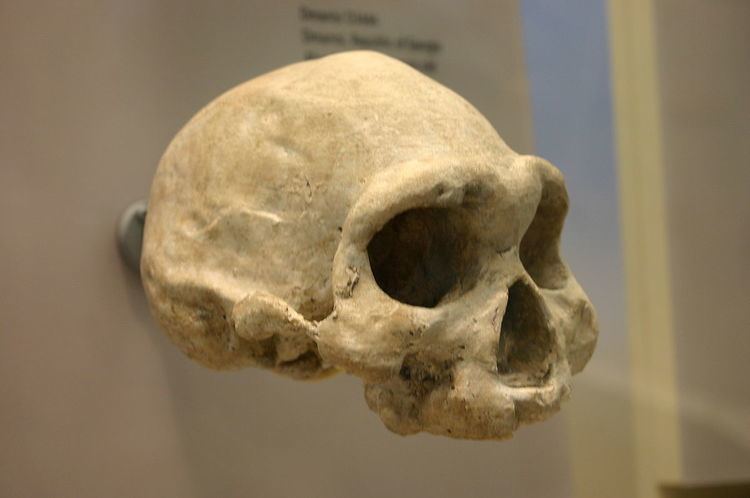Catalog no. D3444 Species Homo erectus Place discovered Dmanisi in Georgia | Common name Dmanisi skull 4 Age 1.8 million years Date discovered 2002-2003 | |
 | ||
The Dmanisi skull 4, also known as D3444 with its mandible D3900, is one of five Homo erectus skulls discovered in Dmanisi, Georgia. Described in a publication in October 2006, it is believed to be about 1.8 million years old. The five Dmanisi skulls are the five oldest hominins ever found outside Africa, thereby doubling the presumed age of the human migration outside the continent.
Contents
Since the publication of the Dmanisi skull 5 in 2013, all five Dmanisi skulls have been in the middle of an paleontological controversy: many hominin fossils thought to be different species, such as Homo ergaster or Homo habilis may not have been separate species. Most human ancestors were quite possibly a single evolving lineage. (See Dmanisi skull 5.)
Description of the skull
Skull 4 and its mandible were discovered during the 2002–2003 excavations at Dmanisi. The cranial capacity is between 625 cubic centimetres (38.1 in3) and 650 cubic centimetres (40 in3). This imprecision is due to a missing part at the cranial base.
This elderly specimen was probably a male and all but one tooth was lost before death. A lot of bone tissue around the mouth was lost due to resorption.
Dating
Until the 1980s, scientists assumed that hominins had been restricted to the African continent for the whole of the Early Pleistocene (until about 0.8 mya), migrating out only during a phase named Out of Africa I. The Dmanisi archeological site is the earliest hominin site out of Africa and the five skulls showed that some hominins, chiefly the Homo erectus georgicus had left Africa as far back as 1.85 million years ago. All five skulls are roughly the same age.
List of Dmanisi 5 specimens
The five Dmanisi skulls are named:
